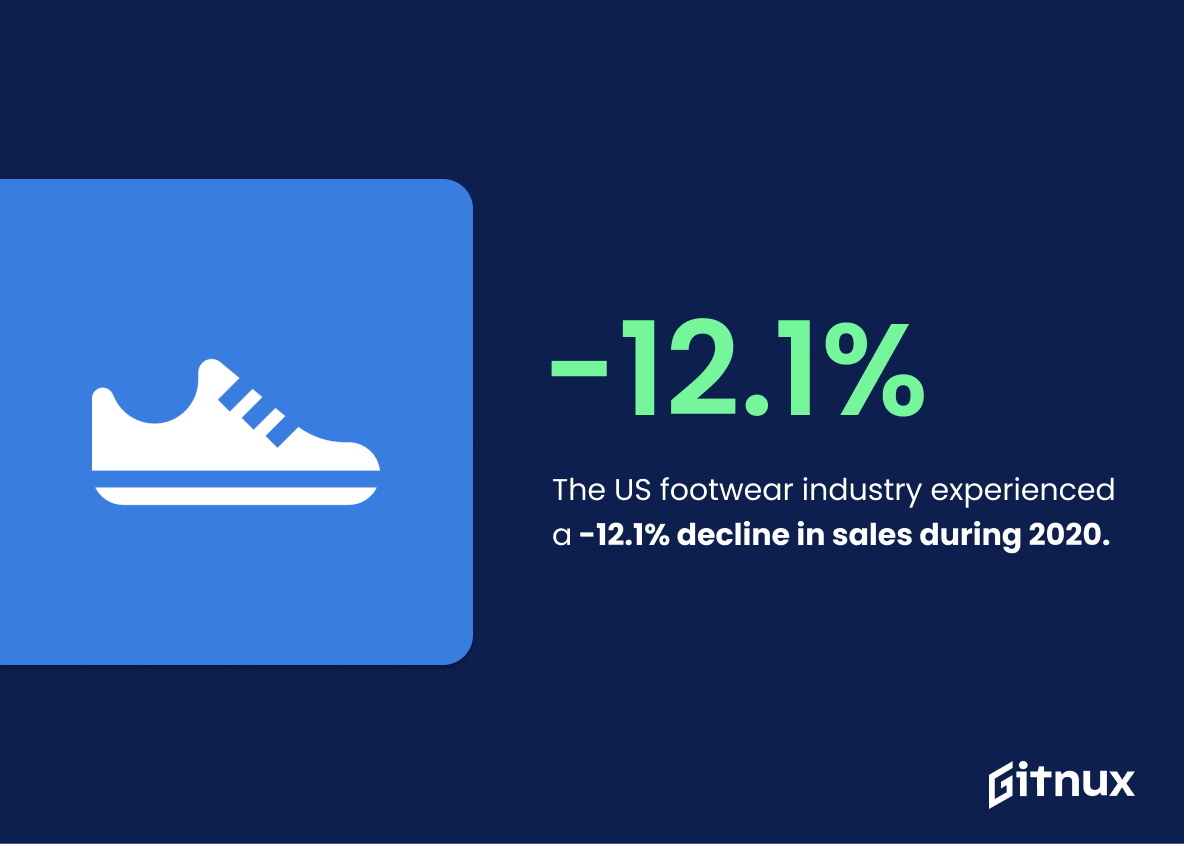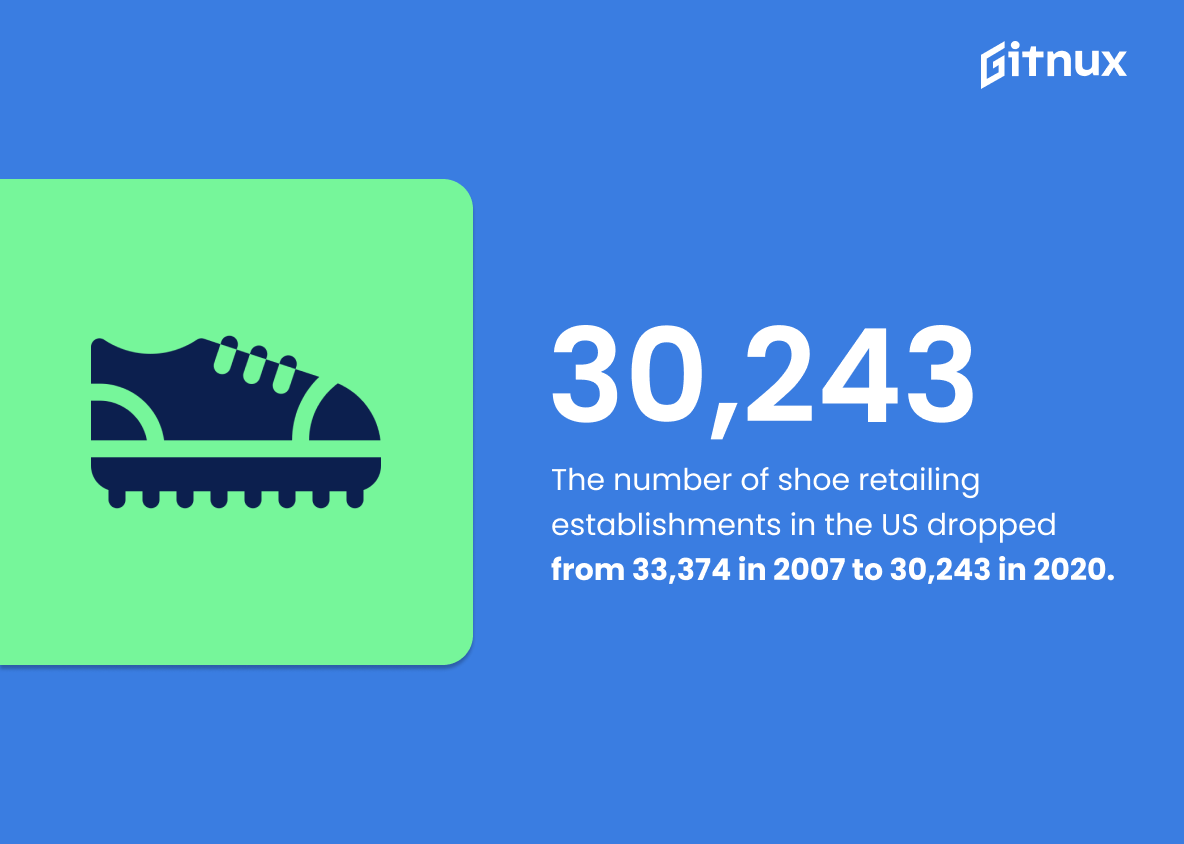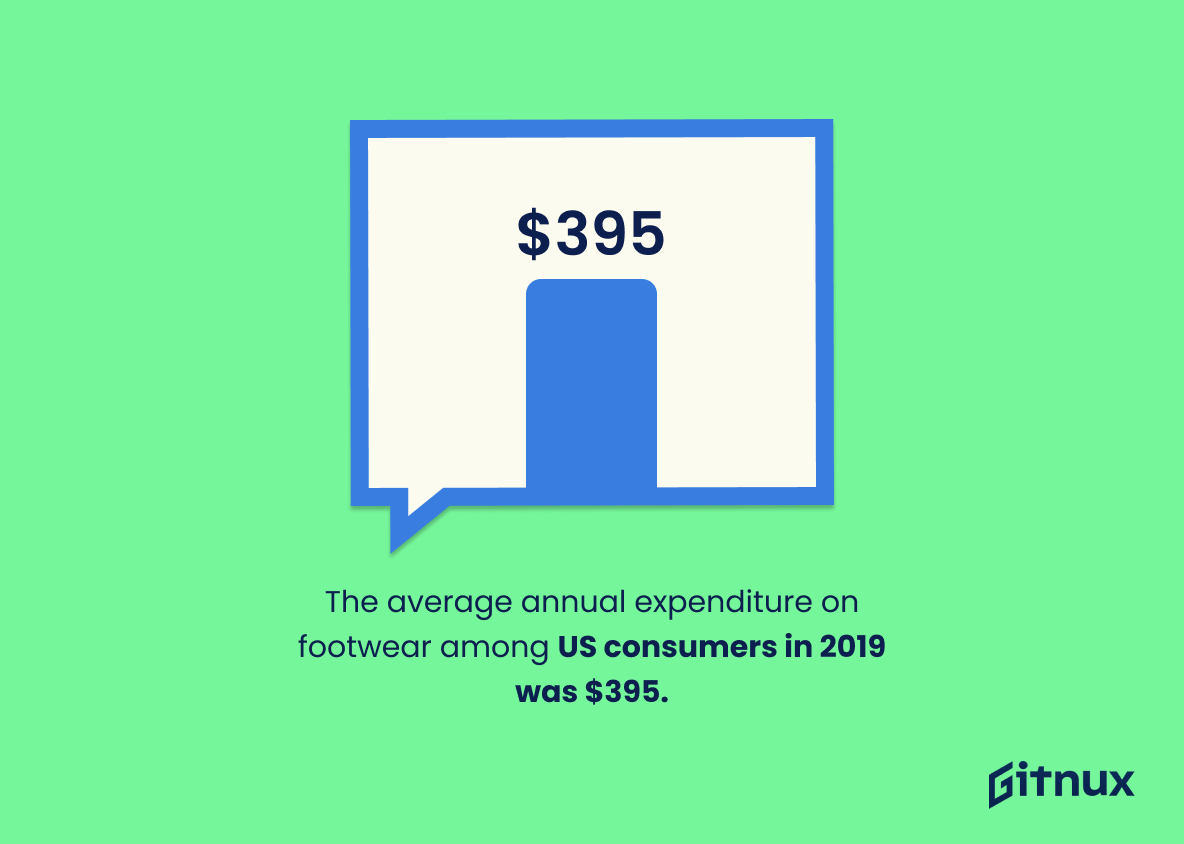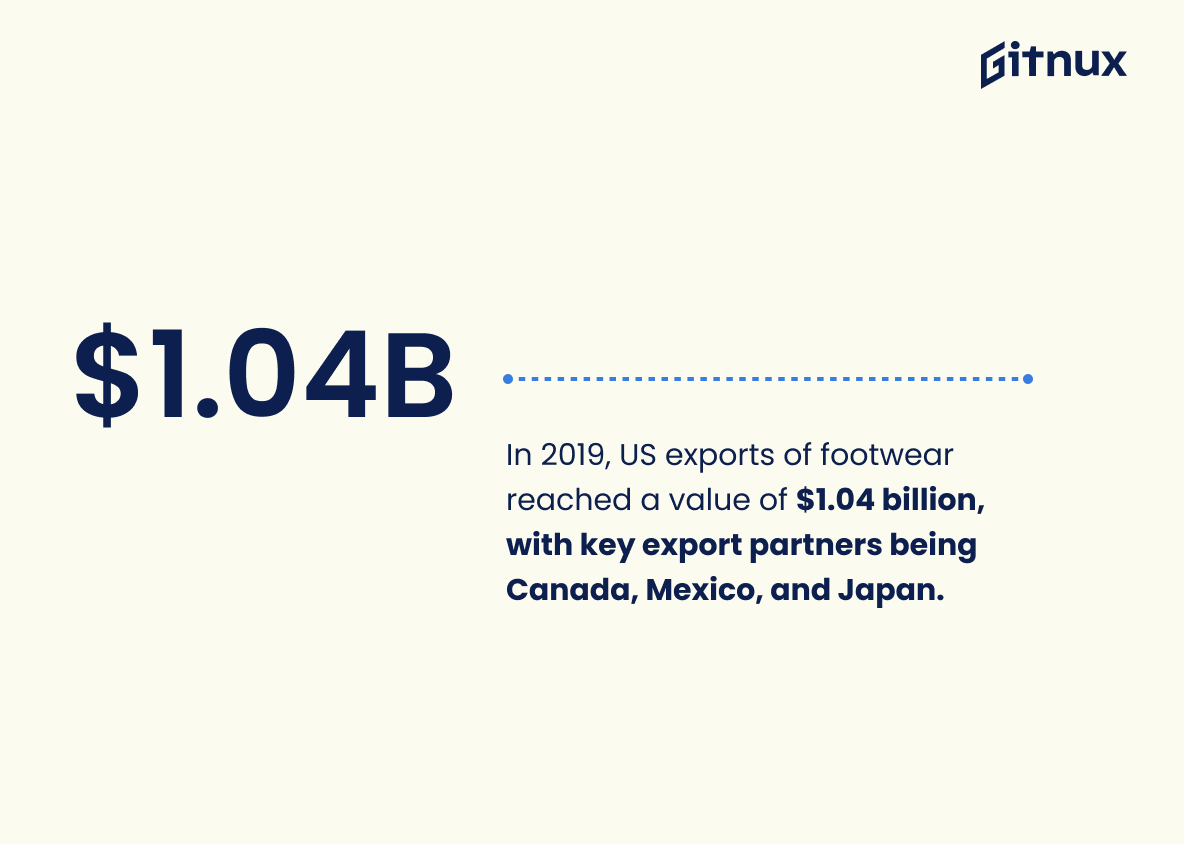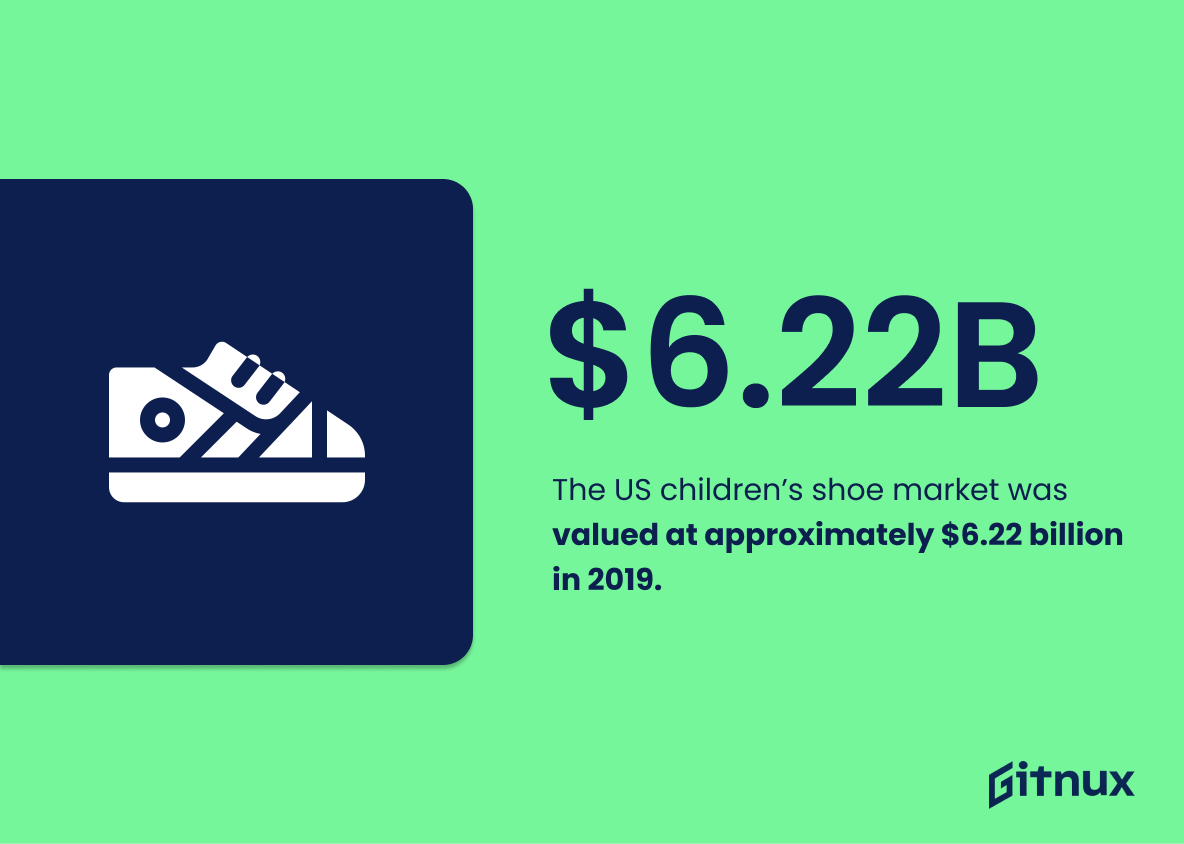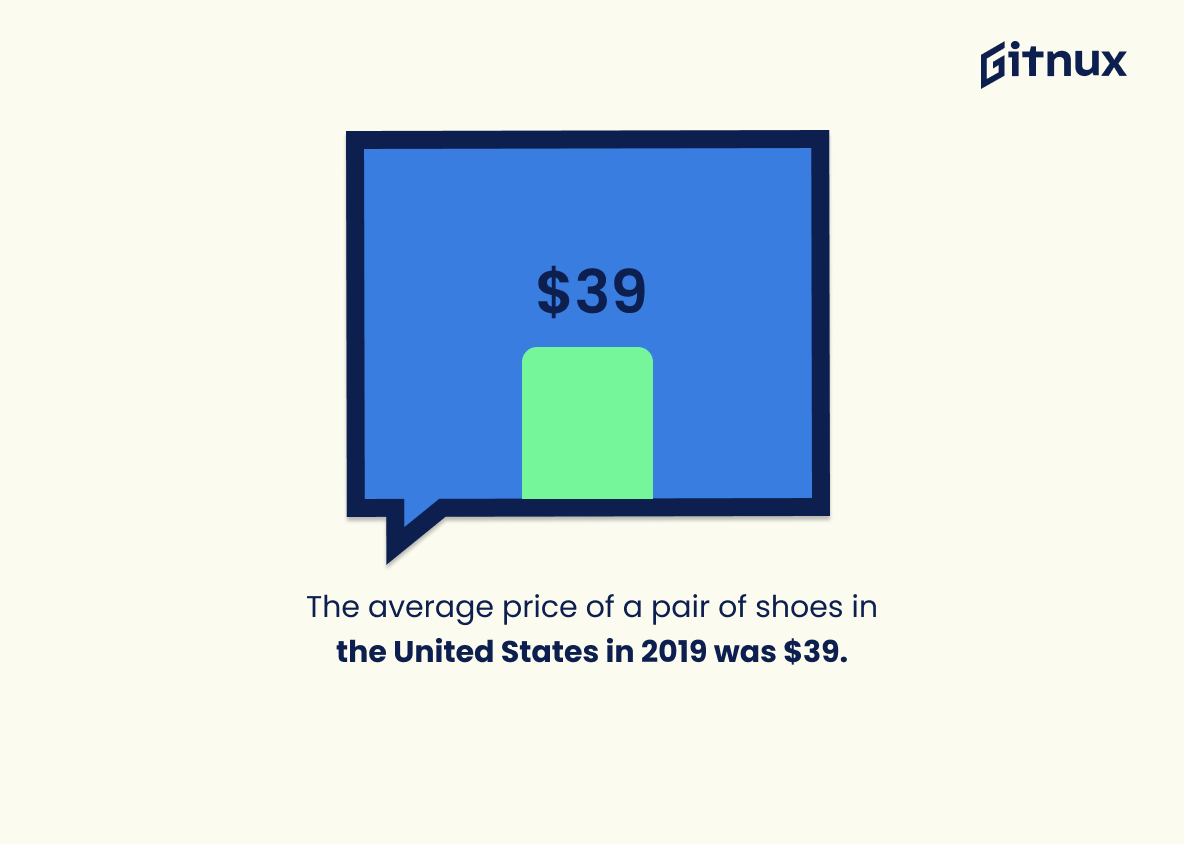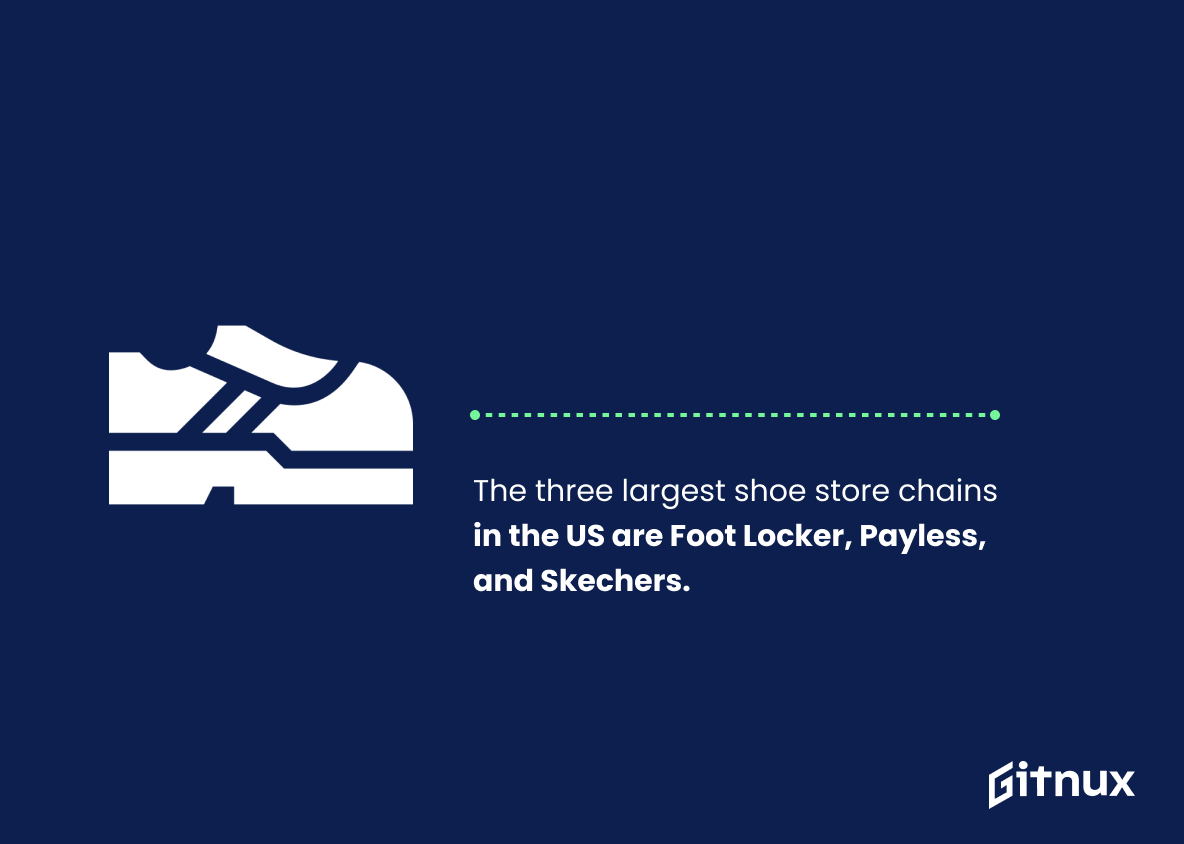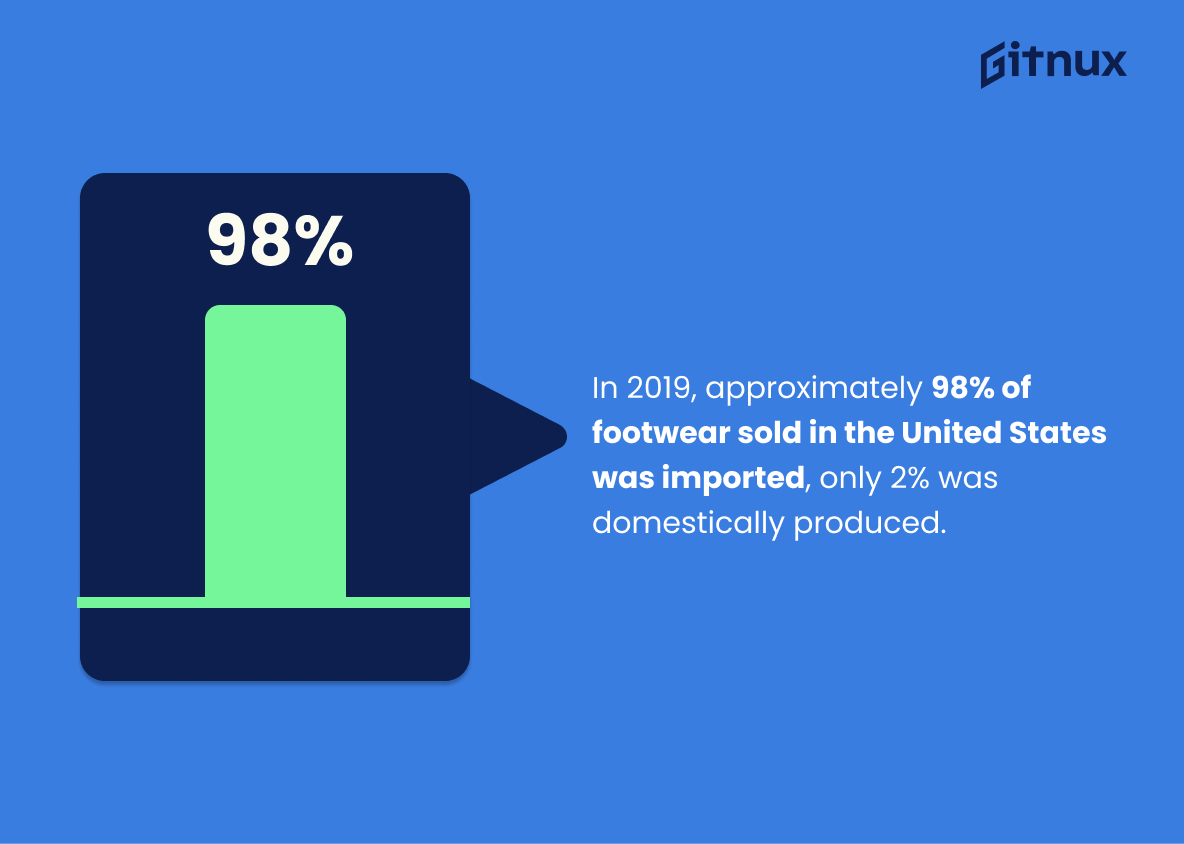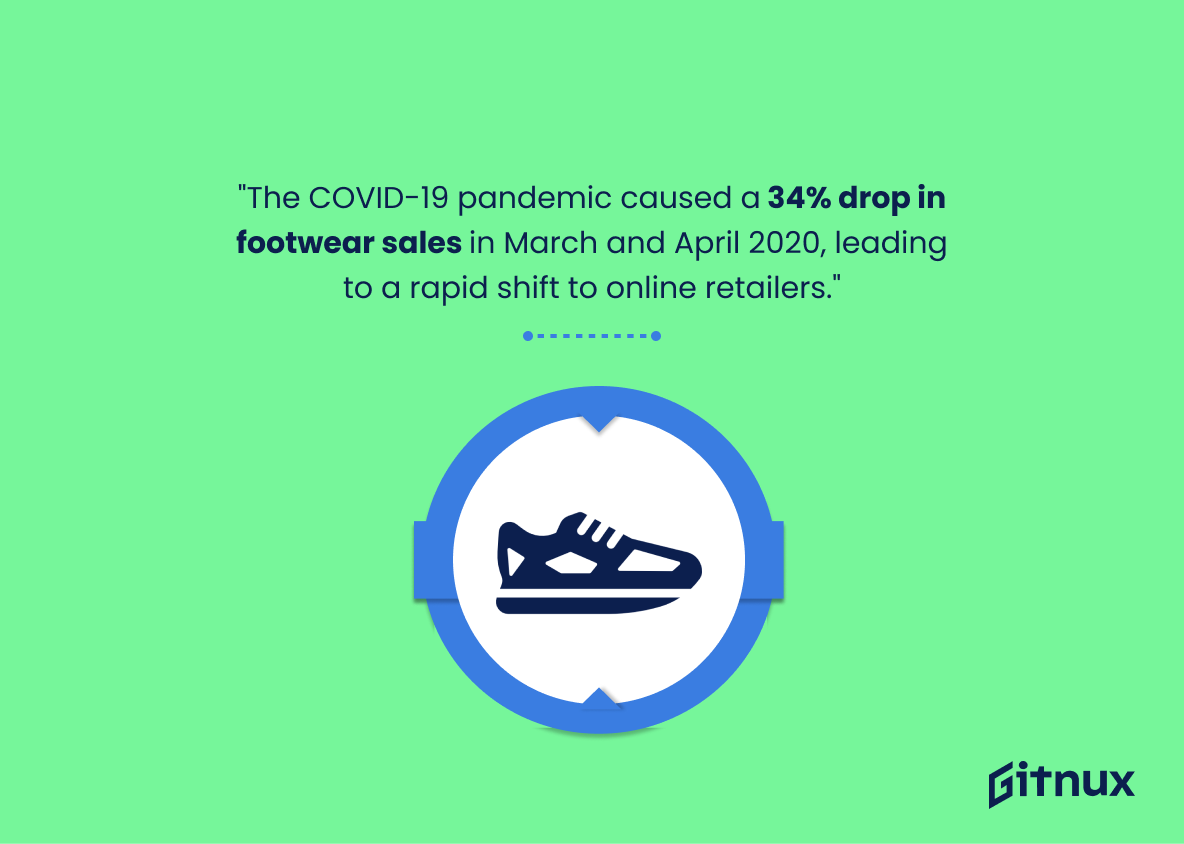The US footwear industry is a major contributor to the global market, with an estimated value of $530.3 billion by 2027. In 2020, American consumers spent approximately $79.86 billion on shoes and experienced a -12.1% decline in sales due to the COVID-19 pandemic. E-commerce accounted for 24.5% of total US footwear sales that year while athletic shoes made up 35.1%. The majority of imported shoes came from China at 65%, followed by Canada, Mexico and Japan as key export partners for US shoe manufacturers in 2019 who exported goods worth around 1$04 billion that same year.. Women’s footwear formed the largest segment within this sector with 42 .9 % share whereas children’s shoe market was valued at 6 .22 Billion dollars in 2019 alone . On average , Americans spend 395 Dollars annually on Footwear which has been decreasing since 2007 when there were 33 374 Shoe retailing establishments compared to 30 243 today Nike Inc held 47 3 percent share of Athletic Footwear Market during 2020 where Sneakers represented 21 2 Billion Dollar Market With 48 Percent Share expected online Sales leader among all categories will be Athletic Footwear surpassing Non –Athletic foot wear category for first time ever during 2021
Us Footwear Industry Statistics Overview
The US footwear industry experienced a -12.1% decline in sales during 2020.
This statistic is a stark reminder of the impact the pandemic has had on the US footwear industry. It highlights the immense financial losses the industry has suffered in 2020, and serves as a warning of the potential long-term effects of the pandemic on the industry.
The US imported 2.43 billion pairs of shoes in 2019, with China accounting for around 65% of those imports.
This statistic is a telling indication of the US footwear industry’s reliance on imports from China. It highlights the fact that the US is heavily dependent on Chinese imports for its footwear needs, with China accounting for a whopping 65% of all imports. This has significant implications for the US footwear industry, as it means that any changes in Chinese import policies could have a major impact on the US footwear market.
Women’s footwear formed the largest market segment within the US footwear industry in 2019, with a 42.9% share.
This statistic is a powerful indicator of the importance of women’s footwear in the US footwear industry. It shows that women’s footwear is the most popular segment of the industry, accounting for almost half of the total market share. This highlights the need for companies to focus on providing quality products and services to meet the needs of female customers. Furthermore, it also suggests that there is a large potential for growth in the women’s footwear market, which could be tapped into by companies looking to expand their market share.
The US accounts for approximately 20% of the global footwear market by value.
This statistic is a testament to the immense size and influence of the US footwear market. It highlights the fact that the US is a major player in the global footwear industry, and that the industry is a major contributor to the US economy. This statistic is also important in understanding the competitive landscape of the US footwear market, as it provides insight into the relative size of the US market compared to other countries.
Sneakers represented a $21.2 billion market in the US in 2020.
This statistic is a testament to the immense size and scope of the US footwear industry. It highlights the immense potential of the market and the vast opportunities it presents for businesses and entrepreneurs. It also serves as a reminder of the importance of the footwear industry in the US economy, and the need to ensure its continued growth and success.
The number of shoe retailing establishments in the US decreased from 33,374 in 2007 to 30,243 in 2020.
This statistic paints a vivid picture of the US footwear industry’s decline over the past 13 years. It highlights the fact that the industry has been struggling to keep up with the changing times, with a decrease of over 3,000 establishments in the US alone. This serves as a stark reminder of the challenges that the industry faces and the need for it to adapt in order to remain competitive.
The average annual expenditure on footwear among US consumers in 2019 was $395.
This statistic is a telling indication of the state of the US footwear industry. It reveals that US consumers are spending an average of $395 annually on footwear, which suggests that the industry is thriving and that people are willing to invest in quality footwear. This statistic is a valuable insight into the US footwear industry and provides a useful benchmark for businesses to measure their performance against.
In 2019, US exports of footwear reached a value of $1.04 billion, with key export partners being Canada, Mexico, and Japan.
This statistic is a testament to the success of the US footwear industry, demonstrating that the US is a major player in the global footwear market. It highlights the importance of the US’s key export partners, Canada, Mexico, and Japan, in helping to drive the industry’s growth. Furthermore, it shows that the US footwear industry is thriving, with exports reaching a value of $1.04 billion in 2019. This is a clear indication that the US footwear industry is a force to be reckoned with.
Approximately 12% of total footwear sales in the United States are work and safety shoes.
This statistic is a telling indication of the importance of work and safety shoes in the US footwear industry. It highlights the fact that these types of shoes are a significant part of the market, and that companies should pay attention to this segment when developing their strategies. Furthermore, it shows that the demand for these types of shoes is strong, and that companies should consider investing in this area to capitalize on the potential of the market.
In 2021, the footwear category leader in online sales is expected to be athletic footwear at 48%, surpassing non-athletic footwear for the first time.
This statistic is a game-changer for the US footwear industry, as it marks the first time that athletic footwear is expected to outsell non-athletic footwear in online sales. This shift in consumer preference is indicative of a larger trend in the industry, and provides valuable insight into the direction of the US footwear market.
The US children’s shoe market was valued at approximately $6.22 billion in 2019.
This statistic is a testament to the immense size of the US children’s shoe market, highlighting the immense potential for growth in the US footwear industry. It is a clear indication that the US footwear industry is a lucrative and profitable sector, and one that is worth investing in. This statistic is a valuable insight into the US footwear industry, and it is essential for anyone looking to gain a better understanding of the industry.
The average price of a pair of shoes in the United States in 2019 was $39.
This statistic is a telling indication of the state of the US footwear industry. It reveals that the average price of a pair of shoes in the US is relatively low, suggesting that the industry is competitive and that consumers have access to a wide range of affordable options. This statistic is an important piece of information for anyone looking to gain insight into the US footwear industry.
The three largest shoe store chains in the US are Foot Locker, Payless, and Skechers.
This statistic is a telling indication of the US footwear industry’s landscape. It reveals that Foot Locker, Payless, and Skechers are the top three players in the market, highlighting their dominance in the industry. This information is invaluable for anyone looking to gain insight into the US footwear industry and its major players.
In 2019, approximately 98% of footwear sold in the United States was imported, only 2% was domestically produced.
This statistic is a telling indication of the state of the US footwear industry. It shows that the vast majority of footwear sold in the US is imported, while only a small fraction is domestically produced. This highlights the need for the US footwear industry to focus on increasing domestic production in order to remain competitive in the global market.
The COVID-19 pandemic resulted in a 34% decline in footwear sales during the months of March and April 2020, invoking a rapid shift to online retailers.
This statistic is a stark reminder of the impact the COVID-19 pandemic has had on the footwear industry. It highlights the need for businesses to adapt to the changing landscape and embrace digital solutions to remain competitive. It also serves as a warning to other industries that may be affected by the pandemic, and the importance of being prepared for any potential disruptions.
Conclusion
The US footwear industry has experienced a tumultuous year due to the COVID-19 pandemic, with sales declining by 12.1% in 2020 and imports decreasing from 2.43 billion pairs of shoes in 2019 to 1.9 billion pairs in 2020. Despite this decline, the global footwear market is expected to grow significantly over the next few years, reaching $530.3 billion by 2027 with the US being a significant consumer within that growth trajectory; American consumers spent an average of $395 on footwear annually in 2019 and are projected to spend even more as e-commerce continues its rise among shoppers looking for convenience during these uncertain times. Athletic footwear remains one of the most popular categories within this sector, accounting for 35% of overall sales while Nike holds 47% share of athletic shoe purchases made throughout America last year alone – proving just how powerful their brand recognition is amongst customers across all ages and genders alike. The children’s shoe market also saw impressive growth at 6%, showing that parents are still willing invest money into quality products despite economic hardships caused by COVID-19 restrictions imposed nationwide
References
0. – https://www.interactiveresources.com
1. – https://www.grandviewresearch.com
2. – https://www.statista.com
3. – https://www.npd.com
4. – https://www.census.gov
5. – https://www.retaildive.com
6. – https://www.aafaglobal.org
7. – https://www.bls.gov
8. – https://www.globenewswire.com
